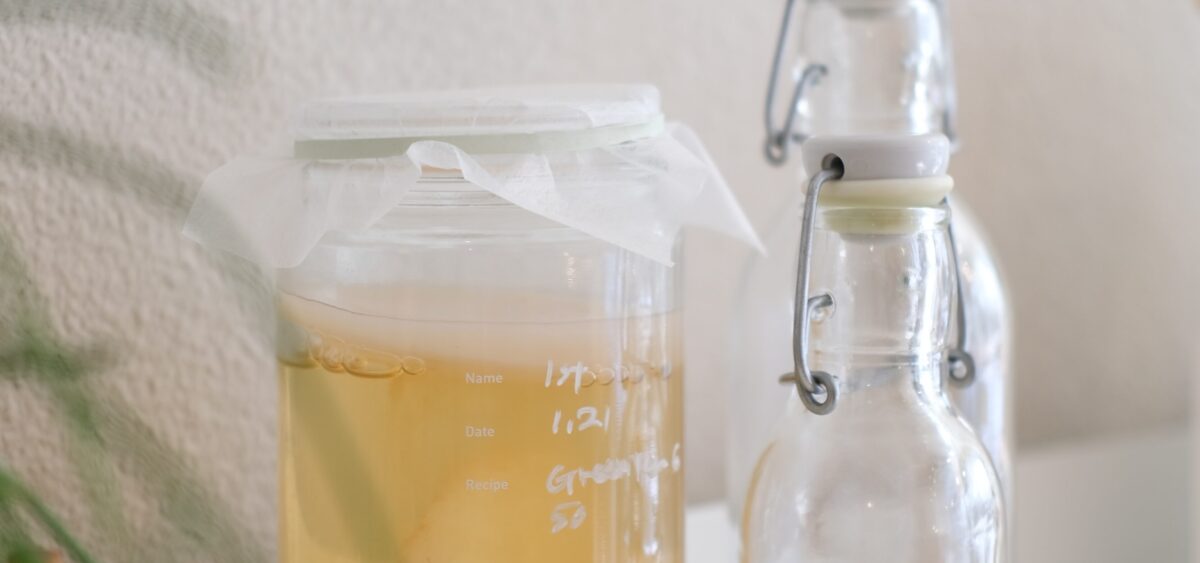
I’ve got a new housemate; it’s growing and fermenting. When it’s ready, I’ll get kombucha and a chance for a new, healthier life.
It arrives in an elegant packet with a drawing of the sun and the concentric lines of the solar system. Instead of leading to the planets, the lines promise energy, harmony, probiotics, strength, immunity and antioxidants. I open the box, there’s an instruction manual at the top. It says that the kombucha will peak between day 10 and 14, and that I can decide myself when I like it the best. The jar should be stored at a constant temperature of 20–25°C. It’s mid-May and I’m in the mountains; the weather outside feels like March, during the night the temperature drops to zero. I decide to hold the brewing off until June.
Meanwhile, I’ve learned from the user’s manual that I should not worry about the slurry and the whitish and brownish efflorescence (it’s yeast, during the pandemic a lot of us have learned how to work with it). I’ve also learned that what I am about to grow is called a SCOBY (it brings Scooby-Doo to mind). This acronym stands for ‘symbiotic culture of bacteria and yeast’. In Poland, it is traditionally called ‘tea fungus’. Apparently, before the war and








